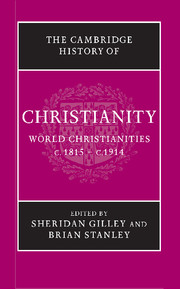1 - Introduction
Published online by Cambridge University Press: 28 March 2008
Summary
Historians of modern Christianity in western Europe, writing amid the chill winds of secularism at the beginning of the twenty-first century, may be tempted to apologise for their subject. Why write about something of diminishing importance, which has been in decline since the French Revolution? No student of the medieval or early modern eras doubts the central role of religion, but modern historiography can get along without it. In fact, the historian of nineteenth-century Christianity need not be defensive about his or her theme, which still entered into the very fabric of the social and political conflicts of the era, and just as the creation of a united Italy was on one level a defeat of Catholicism, and the creation of the German Empire a victory for Protestantism, so the attack upon the churches, in what some have seen as the beginning of secularisation, makes a fascinating story which, at least in the immediate term, led not only to religious decline but also to renewal and revival.
Western Europe might, however, be considered something of an anomaly even in the present, in which Christianity continues to grow and expand elsewhere, in the Third World, in the United States and, with the collapse of atheistic communism, in eastern Europe. This must be one reason for the somewhat unconventional appearance of this volume by the standards of other histories of the nineteenth-century Christian faith, as here at least a third of the space is given to the new Christian churches outside Europe. Catholic Christianity became a global religion through the Spanish and Portuguese empires in the sixteenth century and French missionaries in the seventeenth and eighteenth. There are chapters here reflecting the legacy of this earlier era.
- Type
- Chapter
- Information
- The Cambridge History of Christianity , pp. 1 - 10Publisher: Cambridge University PressPrint publication year: 2005

